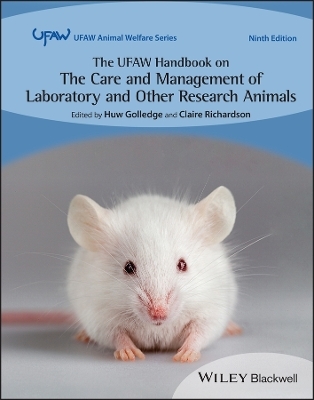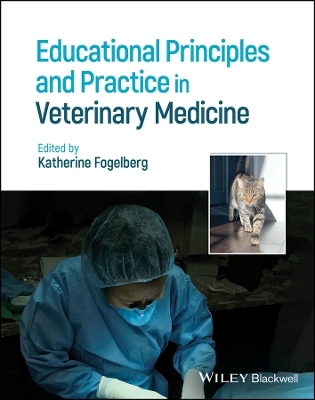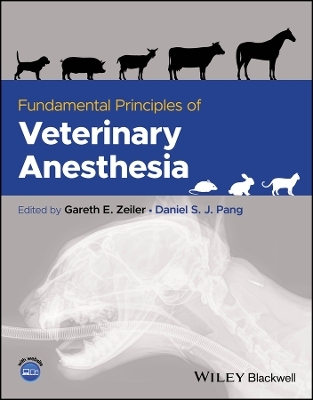
Detection of Genetically Modified Soybeans and Maize in Egypt as well as Comparative Nutritional Safety Investigations of Isogenic and Transgenic (Bt) Maize in Broiler Nutrition
Broiler Performance, Degradation and Metabolic Fate of Maize DNA in some Tissues and Organs
Seiten
2004
|
1., Aufl.
Mensch & Buch (Verlag)
978-3-89820-668-6 (ISBN)
Mensch & Buch (Verlag)
978-3-89820-668-6 (ISBN)
- Titel ist leider vergriffen;
keine Neuauflage - Artikel merken
Green biotechnology is defined as the application of biological techniques to plants with the aim of improving the nutritional quality, quantity and production economics. The most recent application of biotechnology in respect to this area is genetic modification (GM), also known as genetic engineering, genetic manipulation, gene technology and/or recombinant DNA technology. The collective term “Genetically Modified Organisms”
(GMO) is used frequently in regulatory documents and in the scientific literatures to describe plants, animals and microorganisms, which had DNA introduced into them by means of genetic engineering.
In the nature random genetic variation occurs in all living organisms and is the basis of evolution of new species through natural selection. Even before its scientific basis was understood, mankind took advantage of this natural variation by selectively breeding wild plants and animals and even microorganisms such as yogurt cultures and yeasts, to produce domesticated variants better suited to the needs of animals and human nutrition.
Traditional selective breeding methods are based on the transfer of genetic material between individuals of the same species. Many changes to food and feed processes brought by gene technology are not different in essence from those which can take place
in nature, except that the gene technologist speeds them up and channels them in order to drastically reduce their random nature. Thus, within species GM involves few fundamentally new issues. However, gene technology also makes it possible to move
genes across the species barrier. This property makes the technique revolutionary in terms of the potential benefits that it may bring, but it has also caused concern regarding issues of safety, ethics, consumer choice and environmental impact.
Techniques of genetic modification based simply on “cutting and pasting” approach to transfer genes from one organism to another. To achieve this, bacterial enzymes are required that recognize cut and join DNA at specific locations thereby acting as molecular scissors and tape. During the process of genetic modification, the selected gene is copied billions-fold, with the result that the amount of original genetic material in the modified organism is immeasurably small. In addition, since DNA does not always readily move from one organism to another, vehicles such as plasmids (small rings of bacterial DNA) may be used and the selected gene transferred together with the so-called promotor and terminator genes to control its expression. Alternatively, some
plant cells may be transformed by shooting, which is small particles coated with the new DNA into the target cell using a special type of gun (Gene Gun). The modified cell can then be used to regenerate a new organism (IFST, 1999). However, by currently available methods, only small numbers of cells subjected to genetic modification procedures are successfully modified. Furthermore, the regeneration of whole plants or animals from culture cells may take months or years. Consequently, it is necessary to identify the modified cells in a culture mix using marker genes closely linked to the genetic material to be transferred. Antibiotic resistance gene has often been used, since such a property can be detected easily and rapidly at the cellular level in the laboratory and so is useful as a basis for selection.
Other methods of transformation without using of antibiotic marker are becoming available, such as the use of sperm to transport foreign DNA into ova. The use of sperm has a relatively high rate of success, technically simple to carry out, has potential for
transferring larger pieces of DNA and is applicable to animals (IFST, 1999).
The first generation of GM crops, which are already present on the market are those crops characterized by higher yields and more resistant to insects, diseases and harsh environmental conditions. Furthermore, the second generation of GM edible crops, which will be appear on the market in the near future will aimed to improve the nutritional quality and quantity of the modified plants. Some examples of improving nutritional value of the edible crops may summarized as: Manipulation of the amino acid composition of soybean proteins through the expression of foreign gene products to increase its content of essential amino acids has proved effective in transgenic soybeans (Falco et al., 1995). Modification of maize genome to improve protein digestibility investigated by Yang et al. (2002). Manipulation of the free carbohydrate content in
forages has also been investigated and provides an important approach for increasing the supply of readily available energy which can help to improve nitrogen retention (Herbers et al., 1996). Soybeans expressing fungal phytase, an enzyme that catalyses the release of phosphate from seeds (Denbow et al., 1998) and production of maize with low phytate content (Spencer et al., 2000a and b) are examples to increase phosphate bioavailability for simple stomach animals and poultry.
However, the introduction of a gene into a plant may create new or non-expected allergens thus causing adverse reactions in the susceptible individuals, as in the previous study in which a Brazil-nut protein was introduced into soybean to increase the content of the essential amino acid methionine (Nordlee et al., 1996). But this new line of soybean was never commercialized; owing to the allergenicity created by the novel protein expressed in this new line of soybean. The present example shows that new
traits may also give rise to special risks and must be thoroughly investigated before used in animal or human nutrition or even before come in contact with the environment. Another point of scientific debate is the possibility of gene flow to non-target species by cross-breed or transformation. Against this background the migration of genes coding for antibiotic resistance from GM crops into pathogenic bacteria via the gut flora has been discussed (Thomson, 2001). Numerous perceived concerns regarding the safety of GM foods and feeds have been aired, many of them speculative and without any scientific evidence, but those substantial concerns, which have been most widely discussed, are referred to antibiotic resistance, allergenicity and potential toxicity.
Introducing any new technology, including gene technology, into the feed or food chain is of needing to adopt appropriate methods and techniques to determine monitoring and distinguish manipulated foods from conventional ones. Most countries in Europe, Japan and USA start developing regulatory controls for GM foods before reaching the market. In Europe the principal legislation related to food is the European regulation on novel foods and novel food ingredients (EC, 2000) that entered into force since May, 1997. A part from a thorough safety evaluation, Europe now requires mandatory labeling of GM containing foods. Furthermore, the Commission of the European Communities established a 1% threshold for unintended contamination of unmodified foods with
approved GMO. However, up to now no labeling is required for animal feeds. A comparable legislation for animal feeds derived from GMO actually is in preparation as reported in the White Paper of food safety (EC, 1999 and 2001). In Japan a threshold of
5% for frequently used GM soybeans and maize was implemented. Aside from labeling, the Ministry of Health, Labour and Welfare in Japan announced that thoroughly health testing of GM crops is required (MHLW, 2002). In the United States, GM plants or products must not be labeled. However, GMO varieties must get through consulting procedures. The responsible competent authorities in the USA are the Center for Food Safety and Applied Nutrition (CFSAN), the Center for Veterinary Medicine (CVM) and the Food and Drug Association (FDA). Based on information provided by the applicant
the safety of the new product is evaluated prior to marketing whether for animal and/or human nutrition.
These controls were put in place not because safety problems had been identified but because of a lack of familiarity with GMO. Although many of the early concerns regarding the safety of GM foods have not materialized, the precautionary approach has continued as it remains important to ensure that no new hazards are created. When considering safety in relation to GM, generalizations cannot validly be made. Instances have to be considered and studied in a case-by-case approach, and each case should be assessed in relation to the food or feed involved, as ready for consumption.
(GMO) is used frequently in regulatory documents and in the scientific literatures to describe plants, animals and microorganisms, which had DNA introduced into them by means of genetic engineering.
In the nature random genetic variation occurs in all living organisms and is the basis of evolution of new species through natural selection. Even before its scientific basis was understood, mankind took advantage of this natural variation by selectively breeding wild plants and animals and even microorganisms such as yogurt cultures and yeasts, to produce domesticated variants better suited to the needs of animals and human nutrition.
Traditional selective breeding methods are based on the transfer of genetic material between individuals of the same species. Many changes to food and feed processes brought by gene technology are not different in essence from those which can take place
in nature, except that the gene technologist speeds them up and channels them in order to drastically reduce their random nature. Thus, within species GM involves few fundamentally new issues. However, gene technology also makes it possible to move
genes across the species barrier. This property makes the technique revolutionary in terms of the potential benefits that it may bring, but it has also caused concern regarding issues of safety, ethics, consumer choice and environmental impact.
Techniques of genetic modification based simply on “cutting and pasting” approach to transfer genes from one organism to another. To achieve this, bacterial enzymes are required that recognize cut and join DNA at specific locations thereby acting as molecular scissors and tape. During the process of genetic modification, the selected gene is copied billions-fold, with the result that the amount of original genetic material in the modified organism is immeasurably small. In addition, since DNA does not always readily move from one organism to another, vehicles such as plasmids (small rings of bacterial DNA) may be used and the selected gene transferred together with the so-called promotor and terminator genes to control its expression. Alternatively, some
plant cells may be transformed by shooting, which is small particles coated with the new DNA into the target cell using a special type of gun (Gene Gun). The modified cell can then be used to regenerate a new organism (IFST, 1999). However, by currently available methods, only small numbers of cells subjected to genetic modification procedures are successfully modified. Furthermore, the regeneration of whole plants or animals from culture cells may take months or years. Consequently, it is necessary to identify the modified cells in a culture mix using marker genes closely linked to the genetic material to be transferred. Antibiotic resistance gene has often been used, since such a property can be detected easily and rapidly at the cellular level in the laboratory and so is useful as a basis for selection.
Other methods of transformation without using of antibiotic marker are becoming available, such as the use of sperm to transport foreign DNA into ova. The use of sperm has a relatively high rate of success, technically simple to carry out, has potential for
transferring larger pieces of DNA and is applicable to animals (IFST, 1999).
The first generation of GM crops, which are already present on the market are those crops characterized by higher yields and more resistant to insects, diseases and harsh environmental conditions. Furthermore, the second generation of GM edible crops, which will be appear on the market in the near future will aimed to improve the nutritional quality and quantity of the modified plants. Some examples of improving nutritional value of the edible crops may summarized as: Manipulation of the amino acid composition of soybean proteins through the expression of foreign gene products to increase its content of essential amino acids has proved effective in transgenic soybeans (Falco et al., 1995). Modification of maize genome to improve protein digestibility investigated by Yang et al. (2002). Manipulation of the free carbohydrate content in
forages has also been investigated and provides an important approach for increasing the supply of readily available energy which can help to improve nitrogen retention (Herbers et al., 1996). Soybeans expressing fungal phytase, an enzyme that catalyses the release of phosphate from seeds (Denbow et al., 1998) and production of maize with low phytate content (Spencer et al., 2000a and b) are examples to increase phosphate bioavailability for simple stomach animals and poultry.
However, the introduction of a gene into a plant may create new or non-expected allergens thus causing adverse reactions in the susceptible individuals, as in the previous study in which a Brazil-nut protein was introduced into soybean to increase the content of the essential amino acid methionine (Nordlee et al., 1996). But this new line of soybean was never commercialized; owing to the allergenicity created by the novel protein expressed in this new line of soybean. The present example shows that new
traits may also give rise to special risks and must be thoroughly investigated before used in animal or human nutrition or even before come in contact with the environment. Another point of scientific debate is the possibility of gene flow to non-target species by cross-breed or transformation. Against this background the migration of genes coding for antibiotic resistance from GM crops into pathogenic bacteria via the gut flora has been discussed (Thomson, 2001). Numerous perceived concerns regarding the safety of GM foods and feeds have been aired, many of them speculative and without any scientific evidence, but those substantial concerns, which have been most widely discussed, are referred to antibiotic resistance, allergenicity and potential toxicity.
Introducing any new technology, including gene technology, into the feed or food chain is of needing to adopt appropriate methods and techniques to determine monitoring and distinguish manipulated foods from conventional ones. Most countries in Europe, Japan and USA start developing regulatory controls for GM foods before reaching the market. In Europe the principal legislation related to food is the European regulation on novel foods and novel food ingredients (EC, 2000) that entered into force since May, 1997. A part from a thorough safety evaluation, Europe now requires mandatory labeling of GM containing foods. Furthermore, the Commission of the European Communities established a 1% threshold for unintended contamination of unmodified foods with
approved GMO. However, up to now no labeling is required for animal feeds. A comparable legislation for animal feeds derived from GMO actually is in preparation as reported in the White Paper of food safety (EC, 1999 and 2001). In Japan a threshold of
5% for frequently used GM soybeans and maize was implemented. Aside from labeling, the Ministry of Health, Labour and Welfare in Japan announced that thoroughly health testing of GM crops is required (MHLW, 2002). In the United States, GM plants or products must not be labeled. However, GMO varieties must get through consulting procedures. The responsible competent authorities in the USA are the Center for Food Safety and Applied Nutrition (CFSAN), the Center for Veterinary Medicine (CVM) and the Food and Drug Association (FDA). Based on information provided by the applicant
the safety of the new product is evaluated prior to marketing whether for animal and/or human nutrition.
These controls were put in place not because safety problems had been identified but because of a lack of familiarity with GMO. Although many of the early concerns regarding the safety of GM foods have not materialized, the precautionary approach has continued as it remains important to ensure that no new hazards are created. When considering safety in relation to GM, generalizations cannot validly be made. Instances have to be considered and studied in a case-by-case approach, and each case should be assessed in relation to the food or feed involved, as ready for consumption.
| Sprache | englisch; deutsch |
|---|---|
| Maße | 148 x 210 mm |
| Einbandart | gebunden |
| Themenwelt | Veterinärmedizin |
| Schlagworte | HC/Medizin/Veterinärmedizin |
| ISBN-10 | 3-89820-668-8 / 3898206688 |
| ISBN-13 | 978-3-89820-668-6 / 9783898206686 |
| Zustand | Neuware |
| Haben Sie eine Frage zum Produkt? |
Mehr entdecken
aus dem Bereich
aus dem Bereich
Buch | Hardcover (2022)
Wiley-Blackwell (Verlag)
342,40 €
Buch | Hardcover (2024)
Wiley-Blackwell (Verlag)
124,55 €
Buch | Softcover (2024)
Wiley-Blackwell (Verlag)
112,00 €


